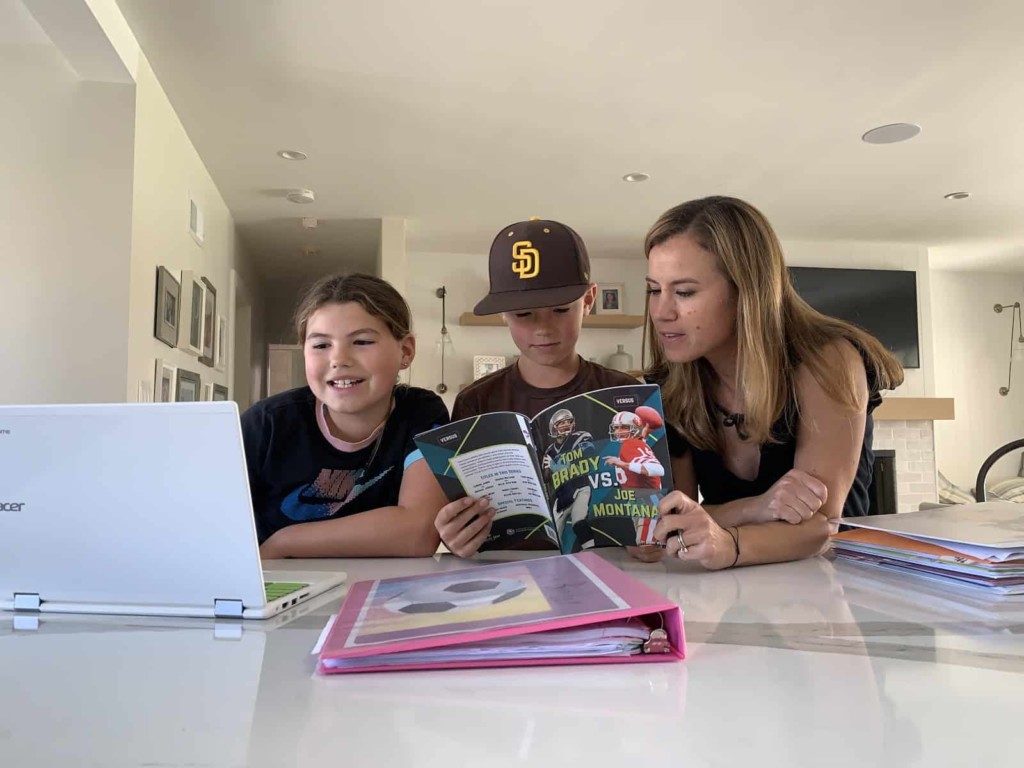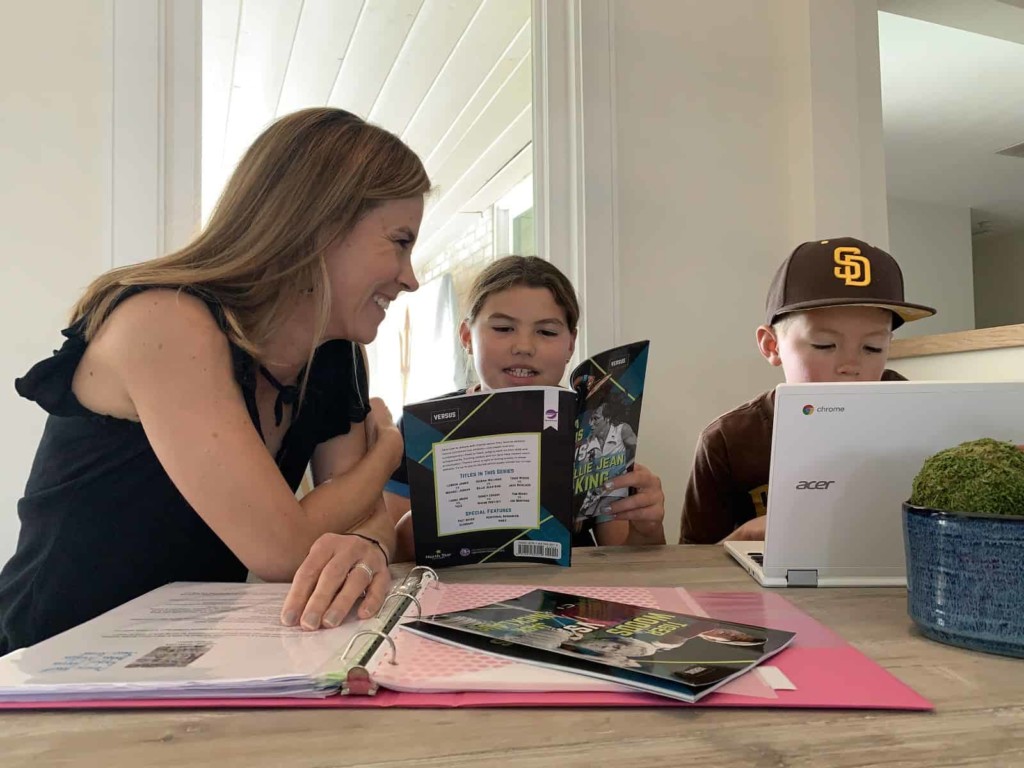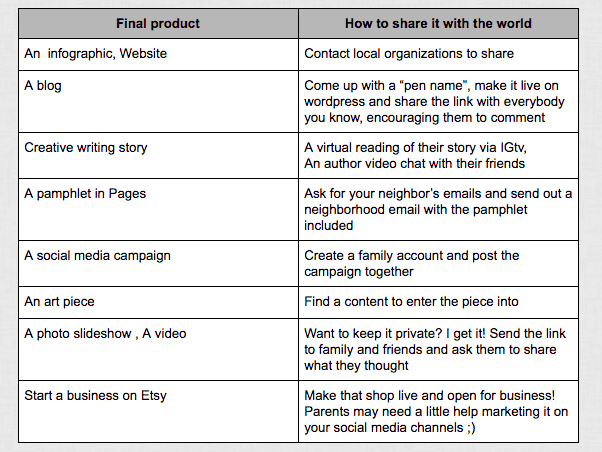Making a Case for Science and Social Studies Through PBL in Distance Learning

By Jenny Pieratt
As articles begin to sprinkle across our feeds with predictions about what school will look like in the fall it is becoming increasingly evident that school WILL be different in August. In my last post of this three-part series I make a case for why, during distance learning, PBL can’t wait. And as we move toward this new era of “hybrid learning” I hope to build upon this case for PBL by reminding us why we can’t forget about Social Studies and Science as a context for learning. As we extend beyond just “maintenance learning” in these final months of school, as educators we will have to challenge ourselves to reimagine instruction so that students can master new concepts and remain engaged in their learning; and PBL driven by Social Studies and Science can provide that if we commit to it.
Rethinking what drives learning
When I co-plan projects with teachers I encourage them to start with their “Driving Standards”: Social Studies and Science. While all standards are important, these two provide a context for learning that ELA and math can easily support. Social Studies and Science standards are often written thematically which makes it easy for teachers to think about “big ideas” for which all learning can connect to when they are planning. While learning is all around us, Social Studies and Science provide a great deal of relevance to real-world topics, which is the bedrock to

designing authentic projects. When students understand the purpose of their learning they are more likely to be engaged, which is a critical element to learning that is missing right now. As I watch my own nine and ten year old’s eyes glaze over their screen during their current virtual school assignments it is becoming increasingly clear that we must move beyond “the basics” of math and ELA and reframe the context for which students are learning in this new environment, and I think prioritizing science and social studies through PBL can help us do that.
How to make it work, virtually
Pockets of innovative schools are trying to figure out how to make PBL work virtually, but the reality is that most traditional schools that were implementing PBL prior to school closures are struggling to balance district grade level “landing pages” and best practices of PBL that deeply engages students and communities in the learning process. There is no one-size-fits-all solution for how to go about implementing PBL before, during, or after COVID-19 but there are some important components that give us the best chance of providing quality PBL to students that must be considered in a virtual setting:
- The context for learning, and therefore the project, has to be grounded in a real-world issue
- Best practices of assessment must be embedded -particularly important to the virtual setting is feedback and reflection.
- Scaffolding and differentiation can be challenging in virtual learning so lean on the workshop model throughout the week to help.
- An audience needs to see student work. Previously this may have included a large community exhibition, but in a virtual classroom it could include any of the following:

Permission for PBL-lite
On a good day before COVID-19, most teachers would tell me PBL was overwhelming and too-time consuming; so it’s not lost on me what a big ask PBL is right now for many teachers who are feeling the pressure from technology overload and “quarantine fatigue”. I also know that many teachers are feeling bored with the current model of instruction and aren’t excited about the thought of continuing on our current trajectory into the fall. So what do we do? Given the current circumstances, I hope teachers can find a way to give themselves permission to do “PBL-lite”, which is a modified version of PBL that can work in virtual learning if we rethink our entry point to teaching and learning. In PBL-lite there are some key differences and important reminders that will make it feel like an easier lift:
- All learning doesn’t have to be collaborative. Keep projects general enough that they can be individualized to students, but don’t worry about frequent collaboration if that overwhelms you.
- Projects don’t have to last for an extended amount of time-keep it short and manageable for everyone; two weeks seems to be the sweet spot for our family.
- Feeling like you can’t provide feedback to students on project work? The teacher doesn’t have to be the only one giving feedback-think about how you can close the feedback loop by leaning on experts, adults at home and peers.
- Not all learning has to relate to the project. If connecting math to social studies feels like a reach, then it probably is. Consider keeping some of those basic learning activities included in your schedule (maybe as self-paced activities, or morning assignments with “PBL” in the afternoon) if that helps ease your fears of students not getting exposure to important content.
As a nation, we can’t afford for STEM and Social Sciences to be forgotten for the extended amount of time that we are now talking about for school closures. And more importantly, our students can’t afford to not be engaged in their learning any longer. I”m not saying that PBL is the “silver bullet” to solving all virtual learning problems, but I do think it can provide some inspiration and excitement during a time when we could all use it!
Looking for more Inspiration? Check out these resources:
- PBL and e-learning
- 5E lesson virtual lesson plan
- PBL -lite at home
- How to design PBL
- COVID-19 resources
- Sports as context for learning
For more, see:
Jenny Pieratt, Ph.D. is a Progressive Educator, Author, and Speaker. She is also the Founder and President of CraftED Curriculum. You can find Jenny on Twitter at @crafted_jennyp.
Stay in-the-know with innovations in learning by signing up for the weekly Smart Update.
Getting Smart has launched the Getting Through series to support educators, leaders, and families on the path forward during such an uncertain time. This series will provide resources and inspiration as we face long term school closures, new learning environments, and address equity and access from a new lens. Whether you are just getting started with distance or online learning, or you’ve had plans in place and have the opportunity to share your work and guidance with others, there is a place for your voice and an opportunity to learn.
We’re going to get through this together, and we invite you to join us. Please email [email protected] with any questions or content you’d like considered for publication. We also invite you to join the conversation and on social media using #GettingThrough.





0 Comments
Leave a Comment
Your email address will not be published. All fields are required.